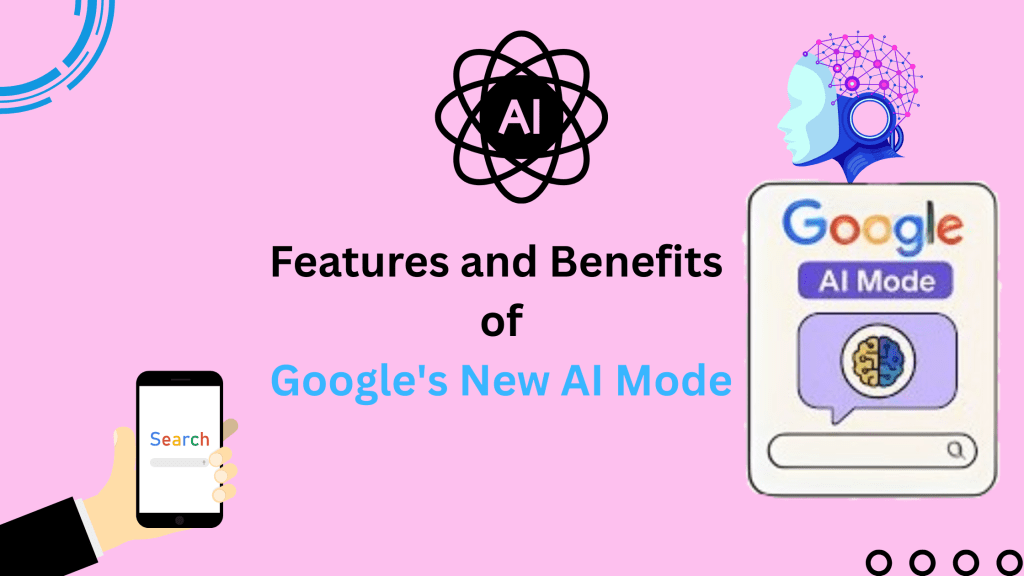It all started with a simple search. You were just trying to compare sleep tracking devices, but five tabs, three YouTube videos, and two articles later, you still didn’t have a clear answer.
That feeling, frustration mixed with information overload, is exactly what Google is tackling with its newest innovation: AI Mode. If you’ve been anywhere near the tech space lately, you’ve probably heard the buzz. From social media threads to tech forums, Google’s new AI mode is making waves.
And it’s not just another incremental update; it’s a massive shift in how we interact with search engines. So, what makes it so groundbreaking? Let’s dig in.
What Is Google’s New AI Mode All About?
Google’s new AI mode is a reimagined version of Search powered by Google’s advanced Gemini 2.0 AI model. Instead of typing a few keywords and sifting through ten blue links, you can now ask complex, layered questions—and get direct, synthesized answers. Think of it as going from “searching” to “understanding.”
The mode leans heavily into natural language processing, allowing users to have multi-turn conversations, upload photos for visual search, and get real-time information that’s personalized and contextual. It’s not just about finding content, it’s about helping you make sense of it.
Plus, it’s a part of Google’s broader shift to integrate AI across its entire ecosystem. From Bard to Maps to Shopping, the tech giant is building a cohesive, AI-driven experience that’s smarter and more useful across the board.
How Google’s New AI Mode Is Changing the Way We Search?
Here’s where it gets exciting. Google’s new AI mode isn’t just a backend upgrade—it’s fundamentally changing how we interact with search itself.
Conversational Queries
- Ask complex questions in plain English and receive comprehensive answers.
- You can follow up naturally, like asking a friend, and Google will remember the context.
Visual Search (Multimodal)
- Take or upload a photo to ask questions about what’s in the image.
- Useful for identifying products, landmarks, or even skin conditions.
Deep Research Mode
- Designed for when you want to go beyond surface-level answers.
- Google dives deeper into the web and gives you more comprehensive overviews.
Smarter Shopping
- Integrated with the Shopping Graph (over 50 billion listings).
- Get product comparisons, price tracking, and even virtual try-ons.
Mobile-First Experience
- Seamless across devices, with full functionality on smartphones.
- Optimized for voice and touch inputs.
This approach doesn’t just streamline the process; it makes it feel more human. Instead of feeling like you’re talking to a machine, you feel like you’re getting advice from a well-informed friend.
The Pros and Potential Drawbacks of AI Mode
Pros
- Efficiency: No more opening a dozen tabs to get one answer.
- Personalization: Context-aware answers tailored to your specific queries.
- Accessibility: Friendly to non-tech users and great for voice search.
- Versatility: Great for everything from quick facts to in-depth research.
Drawbacks
- Less Visibility for Publishers: Since answers are shown directly, fewer users may click through to original sources.
- Early-Stage Limitations: Some features (like task-completion agents) are still in beta or rolling out slowly.
- Dependence on AI Interpretation: There’s a learning curve when it comes to trusting the accuracy of AI-generated responses.
How to Access and Use Google’s New AI Mode?
Getting started with Google’s new AI mode is surprisingly simple. Here’s how to make the most of it:
Quick Steps to Enable AI Mode
Go to Google Search on your desktop or mobile.
If you’re in the U.S., AI Mode Google is generally turned on by default.
If not, head to Search Labs and opt in.
Available Platforms
Fully supported on mobile (Android & iOS)
Also available on Chrome desktop and select browsers
Tips to Get the Most Out of It
- Be conversational with your queries.
- Use follow-ups to dive deeper into topics.
- Try visual search by uploading or taking a photo.
- Enable voice input for hands-free assistance.
What’s Next for Google’s AI-Powered Search?
Google’s new AI mode is only the beginning. Here’s a glimpse into what’s on the roadmap:
Global Expansion
- Currently U.S.-focused, but international rollout is expected soon.
- Multi-language support in development.
Better Gemini Model Updates
- Ongoing improvements to response quality and speed.
- Integration with newer AI models as Gemini evolves.
- Possible Bard Integration
- Tighter integration with Bard and other Google services could be on the horizon.
- Imagine seamlessly switching between Bard and Search for different tasks.
AI Agents for Task Completion
Google teased an AI that can help with tasks like planning trips, booking tickets, or making reservations.
- These features are expected to roll out in stages.
- Will It Stay Free? So far, yes. But premium features or ad-supported enhancements may come later.
Final Thoughts
There’s a reason everyone’s talking about Google’s new AI mode. It’s not just a shiny new feature, it’s a fundamental change in how we explore information online.
And of course, it’s not perfect. And like any tech that disrupts the status quo, it comes with a learning curve and a few growing pains. But one thing’s clear: the future of search is here, and it’s powered by AI.
If you’re a business owner or marketer looking to adapt to this AI-powered shift, now’s the time to act. At Webiators Technologies, we specialize in cutting-edge SEO services designed to align your brand with how search is evolving. Let’s future-proof your digital presence today!
FAQs
Ans: As of now, it’s widely available to users in the U.S., with plans to expand globally soon.
Ans: Nope! Just access Google Search through your browser or app. If needed, you can opt in via Search Labs.
Ans: Yes, traditional search results still exist. AI Mode enhances but doesn’t replace them.
Ans: Google says it adheres to strong privacy protocols and offers controls to manage how your data is used.
Ans: Possibly. Since more answers appear directly in Search, some websites may see reduced click-through rates.


